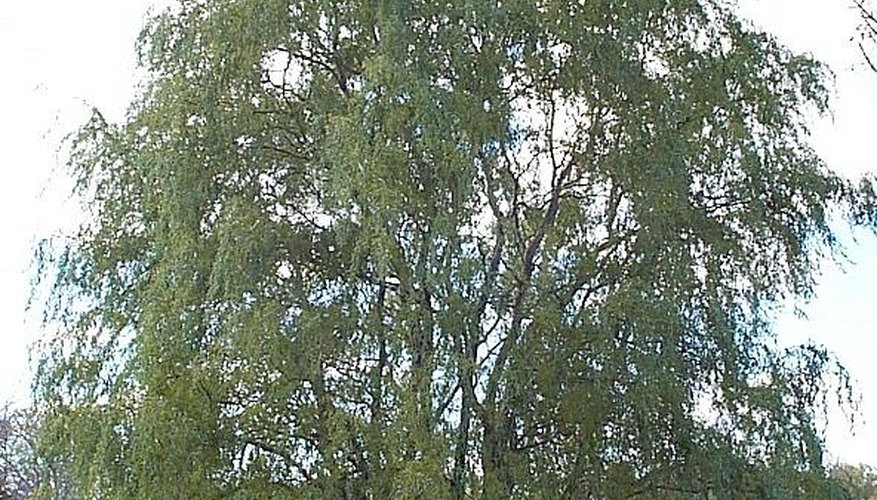A curly willow tree, also called a corkscrew willow, is a willow tree that grows up to 9 m (30 feet) tall and, as the name implies, has twisted branches. The tree originates in China and can be grown in most parts of Europe. Growing a curly willow tree is not difficult as the plant roots easily and quickly from cuttings. With a little knowledge on how to manage the cuttings and young willow plant, you can grow your own corkscrew willow.
- A curly willow tree, also called a corkscrew willow, is a willow tree that grows up to 9 m (30 feet) tall and, as the name implies, has twisted branches.
Take a cutting from an existing corkscrew willow in the early spring, right after the last frost date. Find a healthy branch about the diameter of a pencil. Measure 12.5 to 22.5 cm (5 to 9 inches) from the end of the plant and make a cut.
Choose a spot to root the cutting with well-drained soil in partial sunlight. Some shade is necessary to root the tree, although it is possible to move the curly willow to full sun once it is established. Work the soil in this spot with a trowel.
- Choose a spot to root the cutting with well-drained soil in partial sunlight.
Stick 1/3 to 1/2 of the willow cutting into the soil, with the cut end facing down. Tamp the soil around the base of the cutting. Applying a rooting hormone to the bottom of the stem may be beneficial before planting, but is not absolutely necessary for the willow to take root.
Keep the soil moist at all times, never letting it dry out while the willow cutting is taking root. This process should take about a month and the cutting should develop a strong root system by the end of the growing season. Allow plant to go dormant in the winter, watering less often if at all. In subsequent seasons water only when the soil is very dry.
Fertilise the plant with a general purpose fertiliser during the growing season. Follow the directions on the package for application instructions.
Prune the curly willow in the winter, after the tree is dormant. Take off any dead, diseased or broken branches to promote new, vigorous growth in the spring. Also prune away any branches competing with the leader to establish a strong trunk.
TIP
You may also root a cutting in a pot indoors, consistently keeping the soil medium wet, and transplant it outside once the cutting has grown a strong root system.
